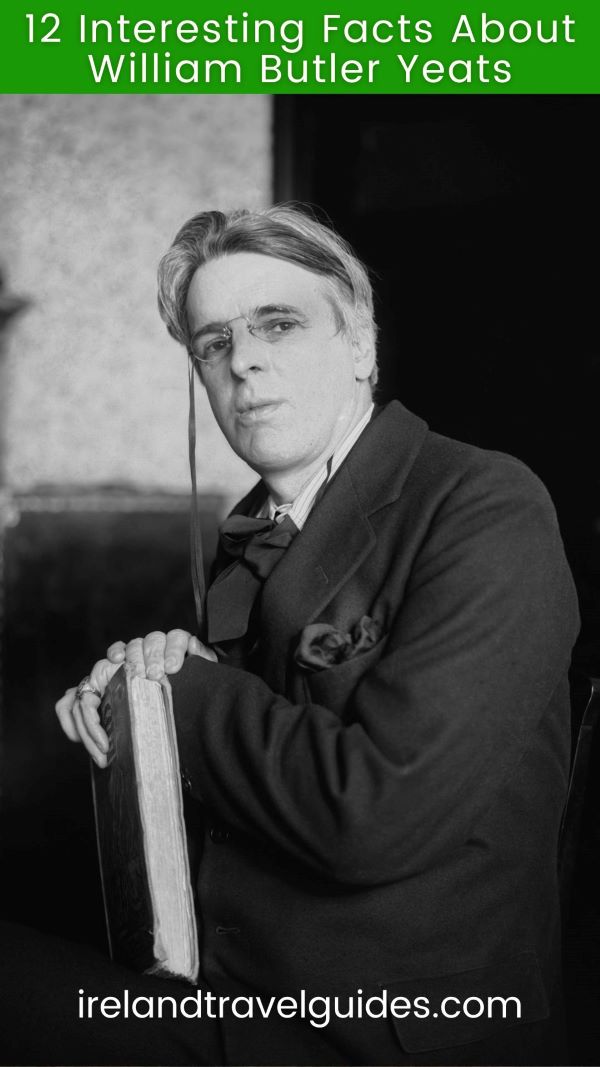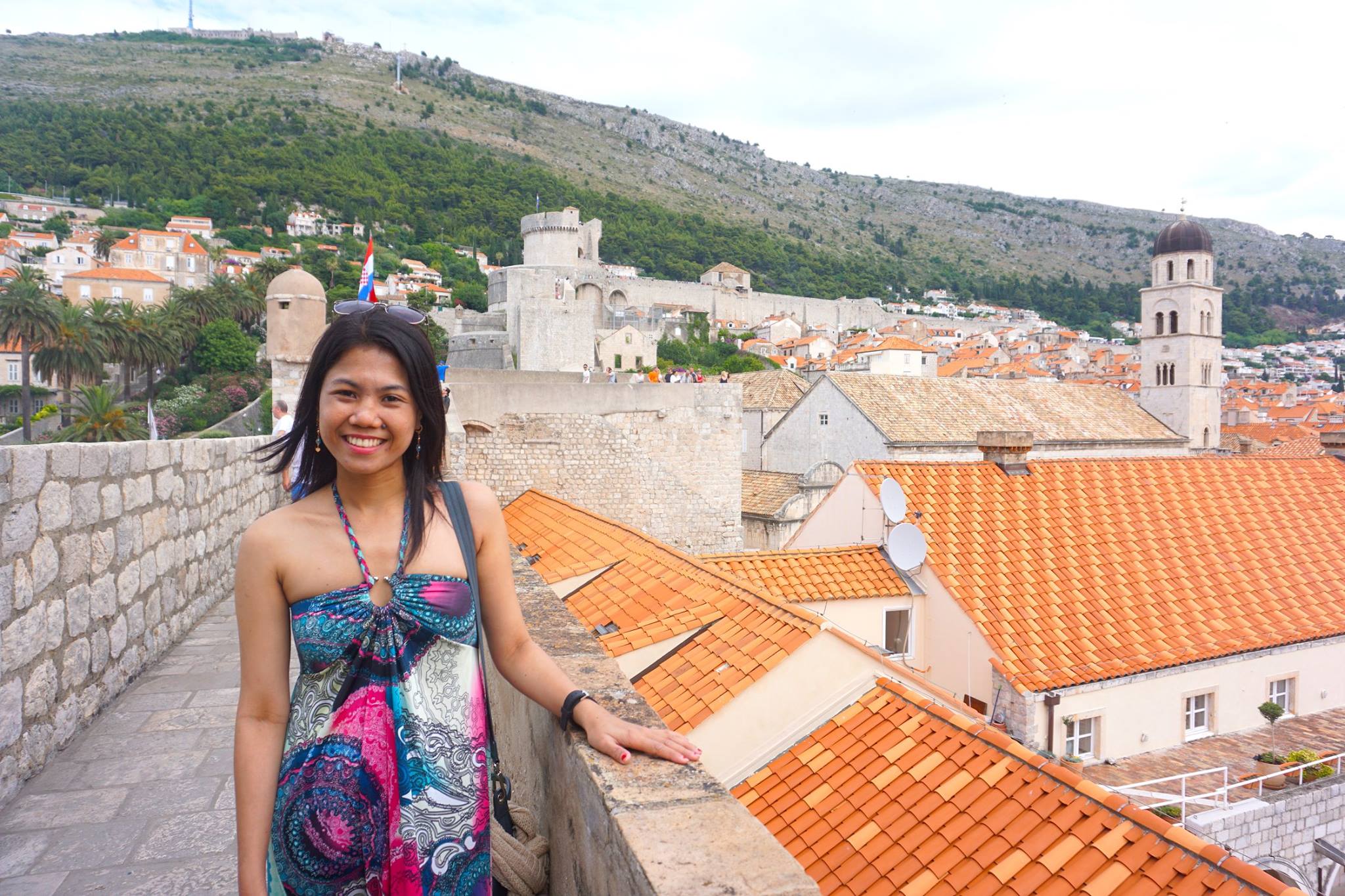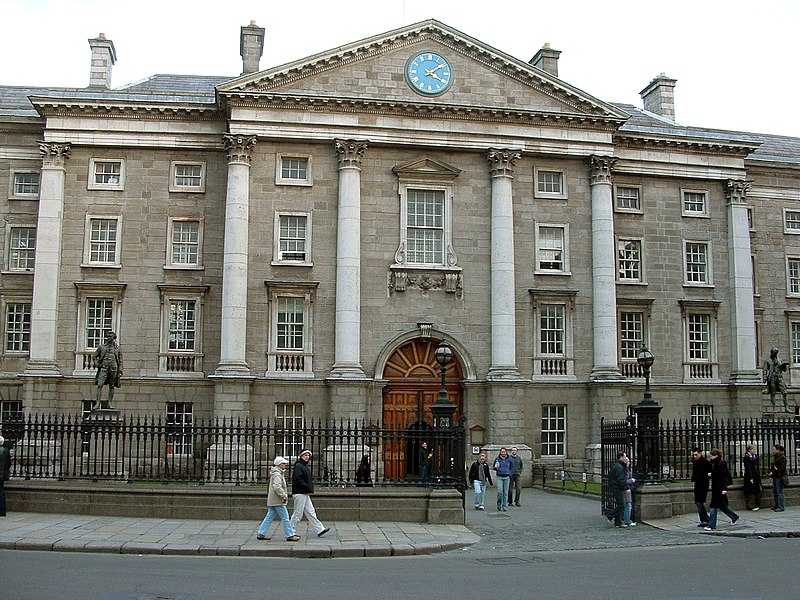Do you want to know interesting facts about William Butler Yeats?
William Butler Yeats is, without a doubt, one of the best writers Ireland has ever had. Better known as simply “W.B. Yeats,” he was not only a poet – widely regarded as Ireland’s greatest at that – and a playwright but a politician as well. Yeats’ work is frequently deemed a significant precursor to Modernism.
Today, he is known for his extraordinary, mystical approach to poetry. This goes the same when it comes to his plays that are often filled with spiritualism and mysticism, and which are inspired by Irish legends. W.B. Yeats was born in Sandymount in County Dublin, Ireland, on 13 June 1865.
RELATED READ:
He grew up both in Dublin and London as his family kept moving to and fro between the two cities. He also spent considerable time in his mother’s hometown of Sligo in the north of Ireland.
Yeats loved Dublin unconditionally as he had a very strong sense of Irish national identity, which was evident not only in his politics but more so in his poetry. Read on to find out more interesting facts William Butler Yeats.
Things you'll find in this article
- 12 Interesting Facts About William Butler Yeats
- 1. W.B. Yeats’ mother was his earliest influence
- 2. Young William Butler Yeats was bullied in school
- 3. Yeats proposed marriage to Maud Gonne at least four times – and was turned down each time
- 4. Yeats also proposed marriage to Maud Gonne’s daughter
- 5. A few weeks after Iseult’s rejection, Yeats went on to ask yet another woman to marry him
- 6. Yeats was possibly autistic
- 7. W.B. Yeats co-founded Ireland’s national theater
- 8. The Yeats siblings – William, Susan, and Elizabeth – established a printing press
- 9. William Butler Yeats was the first Irishman to win the Nobel Prize in Literature
- 10. American poet Ezra Pound worked as Joyce’s secretary
- 11. Yeats served as a senator of the Irish Free State two times
- 12. Yeats died and was buried in France – and reburied in Sligo, Ireland
12 Interesting Facts About William Butler Yeats

1. W.B. Yeats’ mother was his earliest influence
Susan Pollexfen, W.B. Yeats’ mother, homeschooled him as a child, spending uninterrupted hours telling him Irish folklore tales. These tales, together with ancient mythology, would eventually inspire many of Yeats’ early works.
William Butler Yeats went on to become a champion of the Irish literary establishment and an instigator of the Irish Literary Revival.
2. Young William Butler Yeats was bullied in school
In early 1877, Yeats was enrolled in London’s Godolphin School, a boarding school for boys situated near the River Thames in Hammersmith. He studied there for four years, until the Yeats family moved back to Dublin.
At Godolphin, his teachers described the young Yeats as “pedestrian and demoralized,” and he was bullied by his schoolmates.
While he was still a baby when the Yeats family first moved to the English capital in 1867, young William was often mocked by his London schoolmates as a “Mad Irishman.”
3. Yeats proposed marriage to Maud Gonne at least four times – and was turned down each time
Yeats fell in almost obsessional love with Irish actress, suffragette, and nationalist Maud Gonne. He had proposed marriage to her at least four times and got rejected each time.
Gonne even destroyed all the love letters he had written to her. Several poems that Yeats had penned are either inspired by Gonne or at least mention her.
Some examples are “No Second Troy,” “A Man Young and Old,” and “This, This Rude Knocking.”
Gonne went on to marry Irish Republican and military leader John MacBride, who would later be executed by the British government for taking part in the 1916 Easter Rising in the Irish capital.
4. Yeats also proposed marriage to Maud Gonne’s daughter
Iseult, Maud Gonne’s daughter with a French journalist and politician, also became an object of Yeat’s almost obsessive affection.
She was only 22 years old when Yeats proposed to her in 1916 – and he was in his 50s.
The younger Gonne, like her mother, refused the poet’s advances and went on to elope with future writer Francis Stuart who eventually became her husband.
5. A few weeks after Iseult’s rejection, Yeats went on to ask yet another woman to marry him
…and this time he finally succeeded. William Butler Yeats first met his future wife, Georgie Hyde-Lees, at the British Museum in 1910 or 1911.
Seven years later, Yeats proposed marriage to her, which she accepted. Yeats was 52 and Georgie was 25.
We do not know whether Georgie had known that Iseult Gonne had rejected Yeat’s marriage proposal just a few weeks earlier. What we do know is that Yeats married Georgie only three weeks after the engagement.
The following year, Yeats began to call her “George” as he deemed the name “Georgie” to be insufferable.
6. Yeats was possibly autistic
A professor of child and adolescent psychiatry at Dublin’s Trinity College claims that William Butler Yeats manifested classic symptoms of Asperger’s Syndrome, a form of Autism Spectrum Disorder that is characterized by deficiencies in social and communication skills but has no effect on intellect or learning.
His problematic one-to-one relationships and immense difficulties at school while still remaining brilliant in a crowd are signs that he may have had Aspersger’s.
This was evident in the difficulties in his relationship with Maud Gonne that went on for years and years despite her lack of interest.
7. W.B. Yeats co-founded Ireland’s national theater
Yeats’ debut in poetry took place in 1887. In the earlier period, however, his drama production overshadowed his poems.
The Abbey Theatre – formerly Irish Theatre – in Dublin is the national theater of Ireland. It was founded by W.B. Yeats along with fellow playwright, long-time friend, and collaborator, Lady Gregory.
The Abbey Theatre, or simply the Abbey, is one of the major cultural institutions of Ireland. It was opened to the public for the first time in December of 1904. After a fire in 1951 devastated the theater, it was relocated and has remained active since.
8. The Yeats siblings – William, Susan, and Elizabeth – established a printing press
In 1902, William, Susan, and Elizabeth Yeats started the Dun Emer Press so they could publish pieces promoting the Celtic Revival. Dun Emer Press later changed its name and became Cuala Press.
Cuala Press had published over 70 titles, 48 of which were authored by W.B. Yeats.
9. William Butler Yeats was the first Irishman to win the Nobel Prize in Literature
W.B. Yeats created history in December of 1923 by becoming the first Irish citizen to be awarded of the Nobel Prize in Literature.
Yeats was bestowed the most coveted Nobel award “for his always inspired poetry, which in a highly artistic form gives expression to the spirit of a whole nation” throughout his career that spanned more than half a century.
Yeats published over 100 works of prose, drama, and poetry during his long career.
10. American poet Ezra Pound worked as Joyce’s secretary
In November of 1913, Yeats rented Stone Cottage in Coleman’s Hatch, Sussex, England.
During this time, his eyesight was severely failing and needed assistance. Yeats invited the American poet, Ezra Pound, who was living in London at the time, to accompany him to Stone Cottage as his secretary.
Pound spent three winters with Yeats at Stone Cottage. The other two times, Pound was with his wife. The American poet claimed Yeats was “the only poet worthy of serious study.”
11. Yeats served as a senator of the Irish Free State two times
Yeats was first appointed to the Irish Senate in 1922. He was the chairman of the committee that designed the first coins released and used by the Irish Free State.
Yeats was also vocal against anti-divorce legislation during his two terms in the Irish Free State.
12. Yeats died and was buried in France – and reburied in Sligo, Ireland
Yeats’ health was in decline in the late 1938.
On January 28, 1939, the 73-year-old Irish poet died peacefully in his sleep at the Hôtel Idéal Séjour, in Roquebrune-Cap-Martin, France.
He was buried hastily, just two days after his passing. Nine years later, his body was exhumed and reburied in the churchyard of St. Columba’s Church, Drumcliff in County Sligo, Ireland.

Hi, I’m Christine – a full-time traveler and career woman. Although I’m from the Philippines, my location independent career took me to over 60 countries for the past 12 years. I also lived in 4 continents – from the Caribbean, South East Asia, Africa and now in Europe. But despite living in several countries, my love for Ireland remains the same. A country that had been a part of my life since I was 14 because of my love for Irish music and bands. Ireland Travel Guides was born because of this passion and hopefully, in some little ways, this website will be able to help you on your next trip to Ireland.


